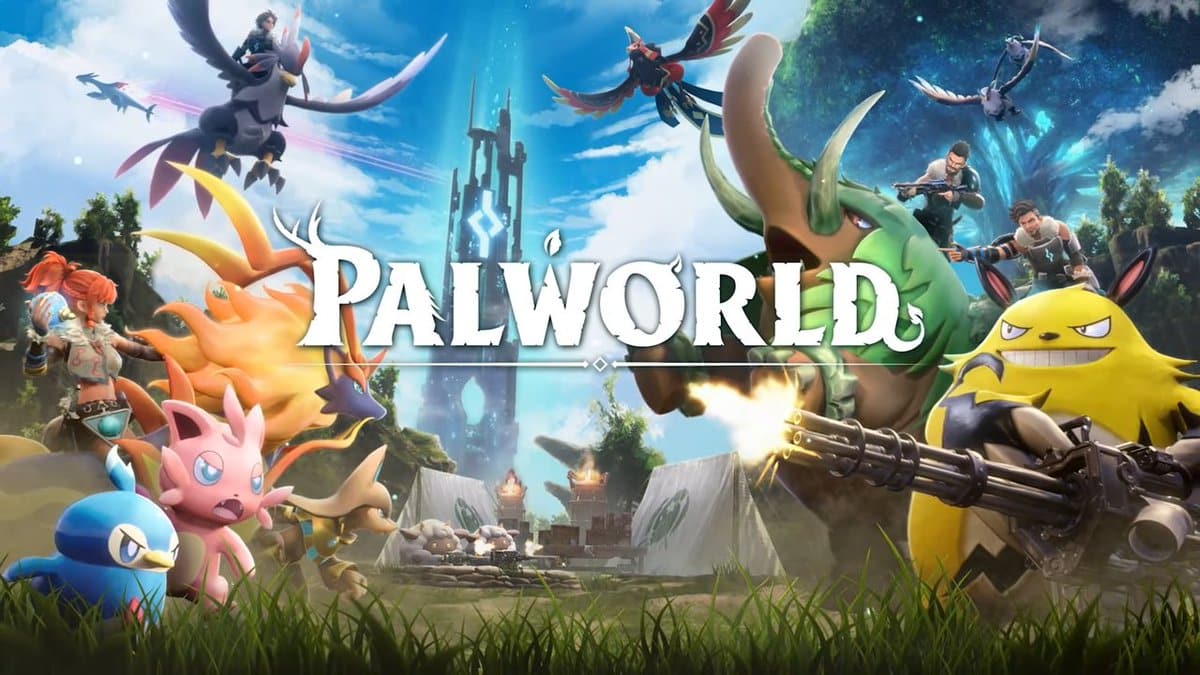This past weekend, a videogame parody of Pokemon called PALWORLD debuted as one of the most successful launches in video game history. The sixth game to ever reach one million concurrent players on Steam, Palworld has sold a record-breaking 4 million units over the weekend, exceeding the pace of sales of large-scale games such as Spider-Man 2. Yet, speculation remains on everyone’s minds regarding its out of nowhere success. Something that has far-reaching implications for the future of the gaming industry: was AI used in place of artists in PALWORLD?
Now, the company has claimed that no AI works were used in the making of the game despite many people coming out and questioning quite the opposite. Palworld seems to have claimed that they have an artist on staff who created the 100 monster designs – despite there being virtually no concept art available for the public to see. As a result, the discourse has been ugly regarding this game. As it’s something popular amongst fans yet does leave audiences questioning – are we just okay with this?
Almost all of the creatures in PALWORLD are derivatives parodies of Pokemon. Everything from its legendaries to its basic monster elemental typologies. Its designs have been described as ‘lazy ripoffs’ by the online community.
Probably the biggest argument as to suspicion in speculation is that Pocketpair is the same company that created the video game AI: Art Imposter. A party game centered around users building art using an in-game AI-content image generator, just like Midjourney.
In fact, Pocketpair’s CEO Takuro Mizobe has openly tweeted their support of using AI image generators as a means to create new types of Pokemon but with less effort, years before PALWORLD was even released. He’s also gone on to say that there could even be a future that sees complete ways to circumvent copyright laws by using AI.
Heads up to anyone thinking of supporting/playing Palworld who also cares about genAI issues… The CEO of that studio is full speed ahead on generative AI, frequently promotes it and tries to push its use in his studio. Even made a game focused entirely around it using SD. pic.twitter.com/6fwvzhh6g7
— Invertex (@invert_x) January 19, 2024
Now in Palworld’s defense, The game seems to be quite fun for most players who are enjoying its original gameplay regardless of any of its AI controversy. A survival game that features both open-world, single, and multiplayer abilities – Palworld takes a multitude of influences from Breath of The Wild, Fortnite, Ark: Survival, Valheim, and of course, Pokemon.
Palworld’s development history has also been years in the making, so there is the argument that regardless of how the art was made, it still took some degree of effort. Palworld was even risking being a near project failure by being over budget, understaffed, and created by, a team that initially had no idea what even a gaming rig was in terms of game development. Which is shocking.
A big reason for the game’s success is that it fulfills a void long sought after in the Pokemon games by blending open-world capabilities with more adult themes. Palworld also takes a rather parodical take on the Pokemon franchise, and so it’s better safeguarded than most other ideas in terms of copyright protection. Especially, as Pokemon itself was based on ideas from other games such as Monster Rancher.
Still, implications are huge for AI plagiarism if true given the current layoffs in the state of the gaming industry. It should also be a concern to every creative artist working out there.
This past week alone, the legacy magazine Sports Illustrated had just laid off a majority of its staff after having most recently been caught using AI-generated writing content not too long ago. In a recent report by a survey of 750 business leaders via ResumeBuilder, 1-in-3 workers had allegedly been replaced by AI and 44% of these companies claim AI will lead to layoffs this year. Mind you, Chat GPT-5 hasn’t even been released yet and we’re now only entering year 2 of a new AI-centered reality.
Culture seems to be avoiding it but when the topic of AI comes up, I think it’s our responsibility to also address something I’ve been seeing associated in all its affected sectors it’s allegedly disrupting: which is layoffs. That jobs and careers are abruptly coming to an end in the near future and that despite all-talks about it being a tool, it should also be noted, that it’s a tool that will remove the need for lots of positions. Not eliminate roles in its entirety but possibly eliminate large chunks of their department.
So will AI supplant video game game developers by hiring fewer artists full-time for concepts? The unfortunate reality is that these were the questions to probably have asked about AI yesterday. We’re far too immersed in it now.









